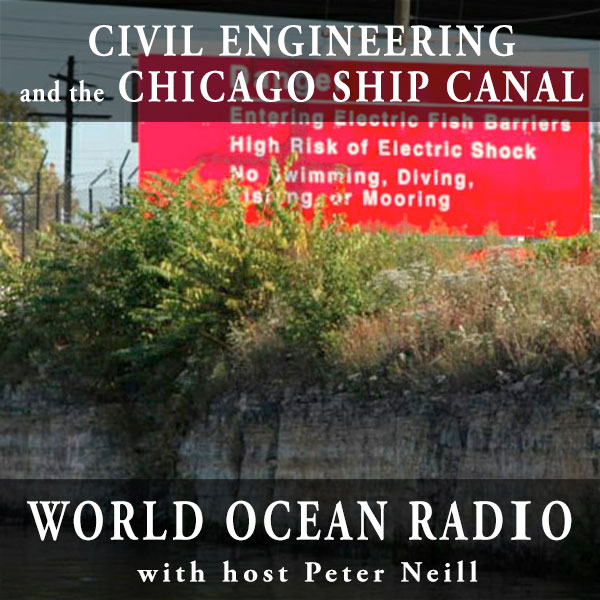The Past and Future of the Chicago Sanitary and Ship Canal
Civil Engineering embodies the making of grand things — like dams and bridges, highways and canals — that are the infrastructure of modern civilization. One such project in the United States is the Chicago Ship Canal, a 28-mile long construct, opened in the late 19th century to connect the Chicago River to the Des Plaines River, to reverse direction of the natural flow, open navigation from the Great Lakes to the Mississippi River watershed all the way to the Gulf of Mexico, and provide additional health service by managing the sewage and waste water treatment and disposal of America’s “second city.” It remains an achievement; in 1999, the Canal was designated a Civil Engineering Monument of the Millennium by the American Society of Civil Engineers and, in 2011, listed on the U.S. National Register of Historic Places.
Construction and operation have been controversial since the beginning. When it became clear that the waste from the growing city, historically deposited into the river and then to Lake Michigan, demanded a dramatic response. The building process was tumultuous, with accidents, strikes, expansions, and the added demand for the ever increasing number of ships and barges transporting food from Lake Michigan to the Mississippi and vice versa. Today, operation of the canal is regulated among city and state authorities, adjacent Great Lakes states, and an international treaty with Canada.
Despite all this, the canal became and remains polluted with industrial chemicals and, because of an aversion to chlorine not fully disinfected human waste that has supported high incidence of human fecal coli form colonies that render the water unsuitable for human body contact.
It gets more complicated. In the 1970s, the U.S. Environmental Protection Agency authorized the introduction of Asian carp as a means to remove algae from fish farms in Arkansas, downstream on the Mississippi, many of which escaped and migrated upstream toward Chicago where authorities erected an electrical barrier to keep them from entering Lake Michigan. As voracious consumers of bottom- and water-column food, the carp severely impacted the supply chain for more vulnerable species. The threat remains: real, present, and adverse to every intent of the original purpose of the canal and to the future protection of the waterways, water supply, and water transportation system.
What to do? The situation cries out for civil engineering. The U.S. Army Corps of Engineers has studied the situation for almost a decade and has proposed to close the canal by re-creating the natural barrier that was destroyed over a century ago at the very beginning. Sealing off the two systems again would prevent the carp — and the ever increasing amount of toxic waste — from moving between the rivers to the lake and vice versa, at an estimated cost of $15 to 18 billion and 25 years to build.
The irony is almost incomprehensible.
What does any of this have to do with the ocean? Think on this: the natural barrier, destroyed and now perhaps to be restored, was the dividing line not just between one lake and one river, but between the Atlantic Ocean, through the Lakes and the St. Lawrence River, and the Gulf of Mexico, down the enormous watershed of the Mississippi. Think of all the land mass east of the Mississippi and south of the St. Lawrence as an island, surrounded by regional seas. Think of how our anthro-engineered solution defied the evolved configuration of the land and put in its place a new contrarian intrusion, a combined process artificially conceived and constructed that did not fulfill its intent, or worse.
What can we learn from this history?
That we need to think twice each and every time we address a problem, so that we don’t create another, more difficult one in its stead. We need to trust the order and efficiency of Nature, not disorder, contravene, and disassemble its ways. We need to understand our place in a world already engineered, amazingly, for our benefit. Leave it alone. Love it to life. Let it serve and sustain our civility.
- - -
Civil Engineering and the Chicago Ship Canal first appeared as a 5-minute audio episode on World Ocean Radio. Host Peter Neill is founder and director of the World Ocean Observatory, a web-based place of exchange for information and educational services about the health of the world ocean.
- Login to post comments
-



